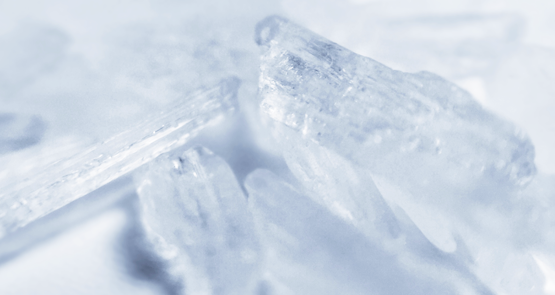Over the last few years there has been increasing comment about the so-called “ice epidemic”, reaching near hysteria in sections of the media. But all is not what it seems.
Firstly, there has not been an increase in stimulant users. Instead, existing users have switched to a more concentrated new form; ice is around eight times as concentrated as the same amount of old forms of methamphetamine powder.
Surprisingly, there has been no price adjustment in the drug market for this more powerful product. Potent drugs like heroin, cocaine or meth have always been sold in the same units — points (0.1g), half weights (0.5g) or eight-balls (3.5g). Ice is sold in the same units as old meth and generally for the same price. Buyers are getting a bottle of wine when they buy a glass, a 1000cc super-bike instead of a 125cc trail bike.
The national surveys have not actually shown any increase in methamphetamine user numbers — if anything, the number of meth users has actually been falling over recent years. What has happened is the number of presentations with problems from stimulant use has increased: more ambulance call-outs, more hospital presentations and more people with severe psychiatric and medical illness.
The increased visibility of ice has not just fueled a wave of public concern, it has also provoked a political response. What do politicians do when they don’t know what to do? Well, they form a committee. If the problem is to do with drugs, then you give it a military-type name, like a task force. You get to be seen as both doing things and being tough at the same time. But this heavy-handed response may be up against some powerful market forces that are not so concerned with appearances.
The drug market is like any other market, constantly changing as new suppliers compete for consumers. Ice is an innovation for this market, and has changed the game.
Ice is synthetic: you do not need to take over a small country to grow it, like heroin or cocaine. It can be produced just about anywhere, from a personal to industrial scale, using a range of different pathways and readily available precursors, or ingredients. The final process in its production is crystallisation. The ice-like crystals produced always contain an extremely pure form of dextro-methamphetamine, almost regardless of the cook.
Ice is smoked or injected, the two ways of delivering the most rapid dose of a drug to the brain. It provokes a massive response directly to the most significant neurons in the human reward system. The brain’s response makes alcohol, other drugs, sex or even chocolate seem hardly worth the effort.
Users keep taking drugs because they find them rewarding, but even heroin users do not want to overdose. When you overdose on heroin, you stop breathing and die. Overdosing on ice is almost as disastrous.
To describe someone toxic on ice as paranoid is misleading. Ice overdose causes a form of psychosis where the person is irrationally hostile, disorganised and aggressive. With an ice psychosis, the affected user does not typically have complicated delusions about an individual known to them — the user is just threatened by anyone with whom he or she comes into contact. Combine this with severe agitation and boundless energy and you have a serious problem. All of the disastrous medical complications of ice, including strokes, cardiac ischaemia, cardiac arrhythmia and addiction increase rapidly as the dose reaches toxic concentrations.
Maybe we need to help users understand the dosing maths of ice. If it is eight times more concentrated, maybe users need to use one-eighth the amount. If a half weight of ice is the same as an eight-ball of speed, why not use it like it is? Meth users often have great social and psychological disadvantages but surely eight-times tables are not that hard.
We need to start the response to ice by educating existing users. We need to help them understand the much greater risks of overdose and toxicity of this concentrated form of methamphetamine.
Dr Philip Crowley is an addiction medicine specialist who works at two public hospitals in Adelaide and in private practice.
*This article was originally published at InDaily.








Where do I find some of that fine Albuquerque blue?
Some years ago I asked my young friend the drug dealer to come around with his pipe and a big bag of ice. This enterprising chap sold drugs to the AFL footballers every weekend when they played in Perth. I knew every Monday morning which footballers were using in Perth that weekend and their drug of choice. It was always ice and cocaine, drugs which dont stay in the system for long.
Anyway he turned up on a Friday night and we smoked a lot of this primo stuff. I thought that the effects were pretty ordinary compared to cocaine but all weekend I felt as bad as I have ever felt in my life.
It was far worse than any hangover and I can see why people go out and buy more ice to feel better. In my experience recently ice is an epidemic in cities and towns all over Australia, I dont think the media are exagerating at all. The same thing is going on in SE Asia.
The curse of modern Australia – who listens to knowledgeable experts who give insightful understanding? This is most unsuitable for a 4 second sound bite despite it being far more sage and useful that the ‘war on drugs’ soundbite.